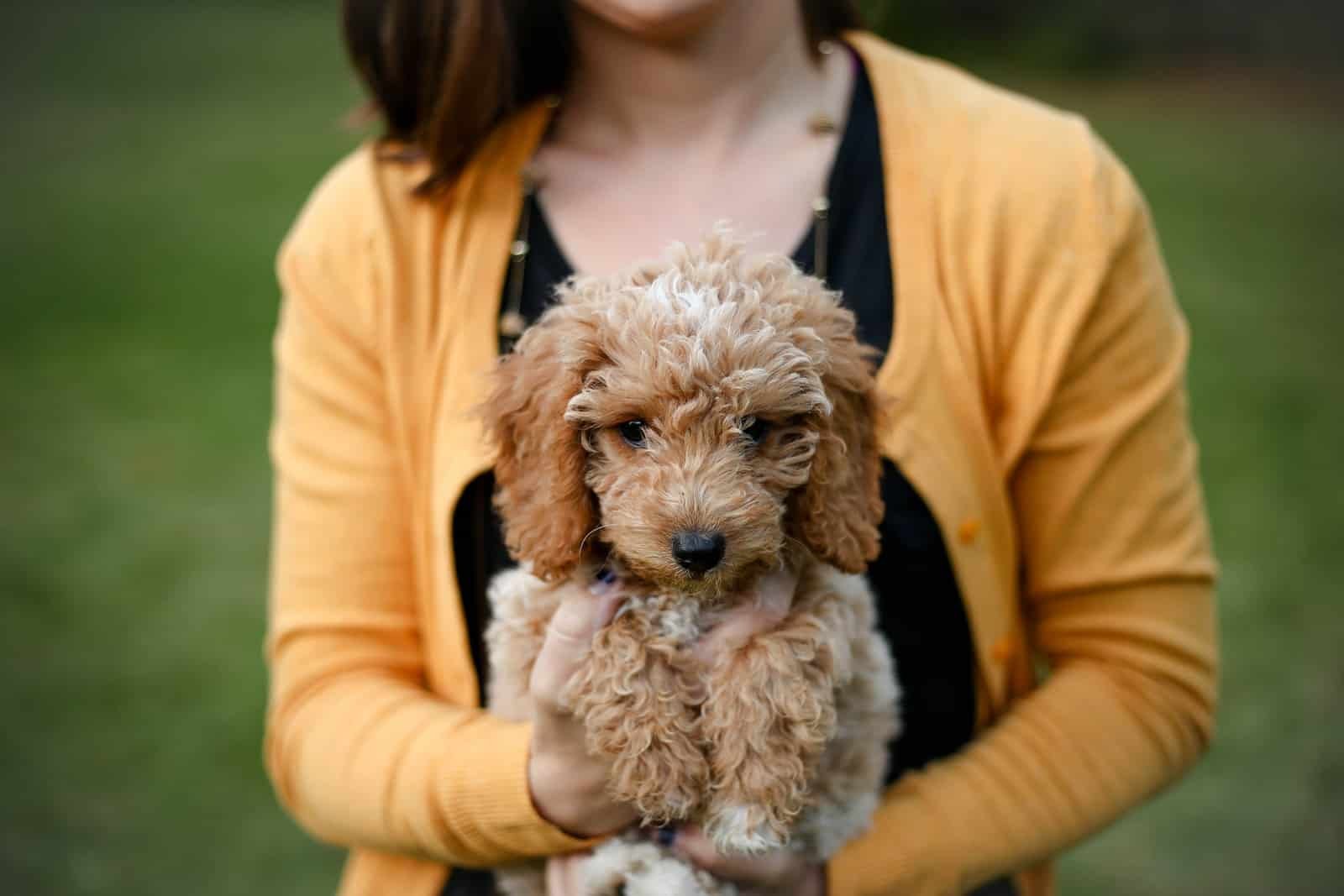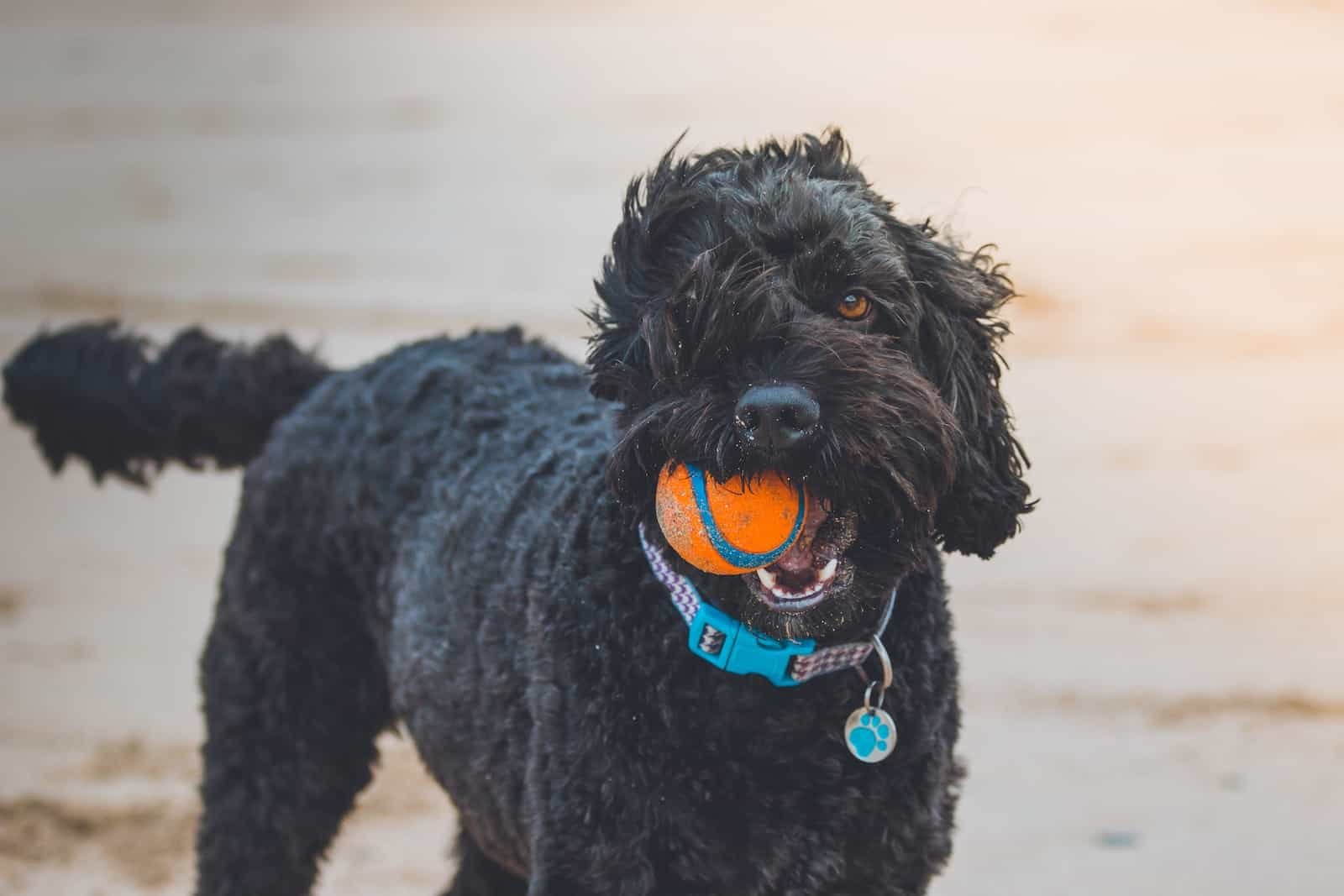
Understanding Poodle Mixes
Poodle mixes have exploded in popularity lately as families search for dogs with traits like friendliness, brains, and low shedding. These hybrids can be pretty surprising—some mixes are rare and bring together all sorts of personalities and looks.
What Defines Rare Poodle Mixes
Rare poodle mixes usually come from crossing standard, miniature, or toy with a less common breed. Besides Goldendoodles and Labradoodles, there are lesser-known Poodle mixes like the Shepadoodle, Shar-Poo, and Poogle.
These crosses are considered rare because their parent breeds aren’t as common, or maybe breeders just don’t focus on them much. Sometimes, it’s simply that the other breed isn’t super popular or easy to find.
Rare hybrids come in all shapes and sizes. Some inherit the poodle’s curly, hypoallergenic coat, which allergy sufferers love.
Others might get the wild coloring or body shape of the non-poodle parent. It’s really a toss-up sometimes, and that’s kind of the fun of it.
History of Designer Dogs
Designer dogs—yep, that includes all the “doodle” types—started getting attention in the late 20th century. The first big one was the Labradoodle, which breeders created in the 1980s as a guide dog for someone with allergies.
Breeders sought to improve the breed by adding desirable traits from other breeds. Over time, people kept mixing things up, hoping to get the best of both parents.
The appeal of these mixes grew as people realized they made affectionate, adaptable pets. Some were bred for special jobs or health reasons, while others were just for fun or curiosity.
Benefits of Poodle Hybrids
Many poodle mixes don’t shed much, so they’re a lifesaver for people with allergies. Their coats can be curly or wavy, usually helping keep dander at bay.
They also tend to be super smart and eager to please, which makes training a breeze for most. Hybrids like the Cavapoo or Schnoodle fit well in smaller homes because of their moderate size and chill personalities.
Mixing two breeds gives these dogs a blend of traits, so they can adapt to all sorts of lifestyles. Whether you go for a rare mix or a classic doodle, you’ll probably end up with a friendly, energetic buddy.
Traits and Temperament of Unique Poodle Mixes
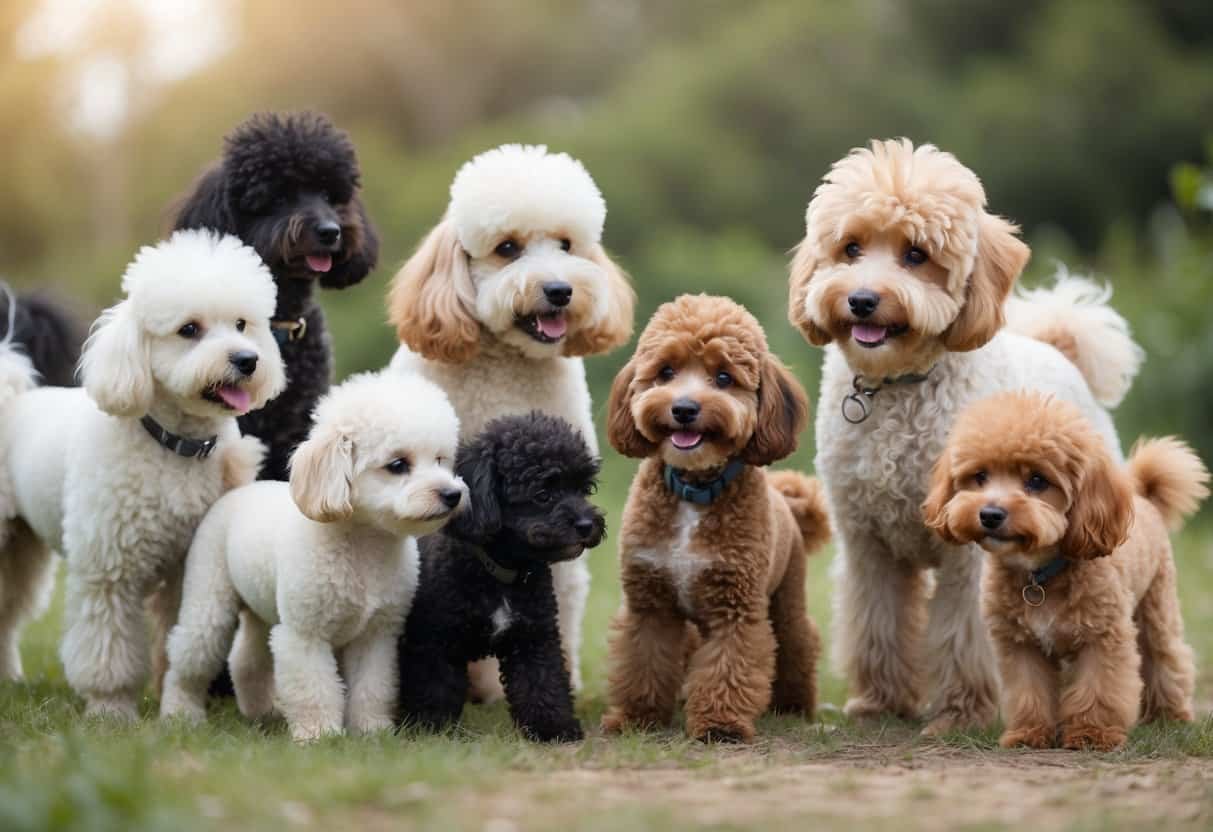
Rare poodle mixes bring together poodle traits and those of other breeds, so you get a wild variety of personalities and appearances. People love these hybrids for their intelligence, adaptability, and—let’s be honest—their awesome coats.
Personality and Intelligence
Unique poodle mixes usually have sharp minds and pick up on things quickly. Most enjoy their curiosity and love to explore whatever’s around them.
Some mixes turn into alert watchdogs and can be a bit vocal, while others are more relaxed and cuddly. You might get a feisty one, but most are loyal and stick close to their people.
These hybrids, even the rare ones, often form strong bonds with their owners. Some of these doodle mixes have become favorites because they’re friendly and fit right into different home setups. If you’re curious about their personalities, you’ll find a lot of variety.
Obedience and Trainability
Most rare poodle mixes are easy to train. Because of their heritage, they enjoy mental stimulation and readily learn new skills.
They’re motivated by treats, toys, or just your attention, so teaching them new tricks tends to be pretty smooth. Some mixes have working dog backgrounds, which gives them extra focus and drive.
That said, not every mix is the same. Some might be more independent, so starting training and socializing early is a good idea. These unique hybrids do best when you use positive reinforcement and set clear boundaries.
Physical Characteristics
Mixes share the curly or wavy coats that stand out. These coats are often low-shedding and hypoallergenic, which makes them appealing for many people.
Size and color can be all over the map, depending on the mix. You might see tiny dogs or big ones, with coats from tight curls to loose waves.
Some are athletic and built for action, while others just want to snuggle. Ears, tails, faces—they can all look totally different. For a few rare mixes, their one-of-a-kind combinations make them really memorable.
Rare Working and Herding Poodle Mixes
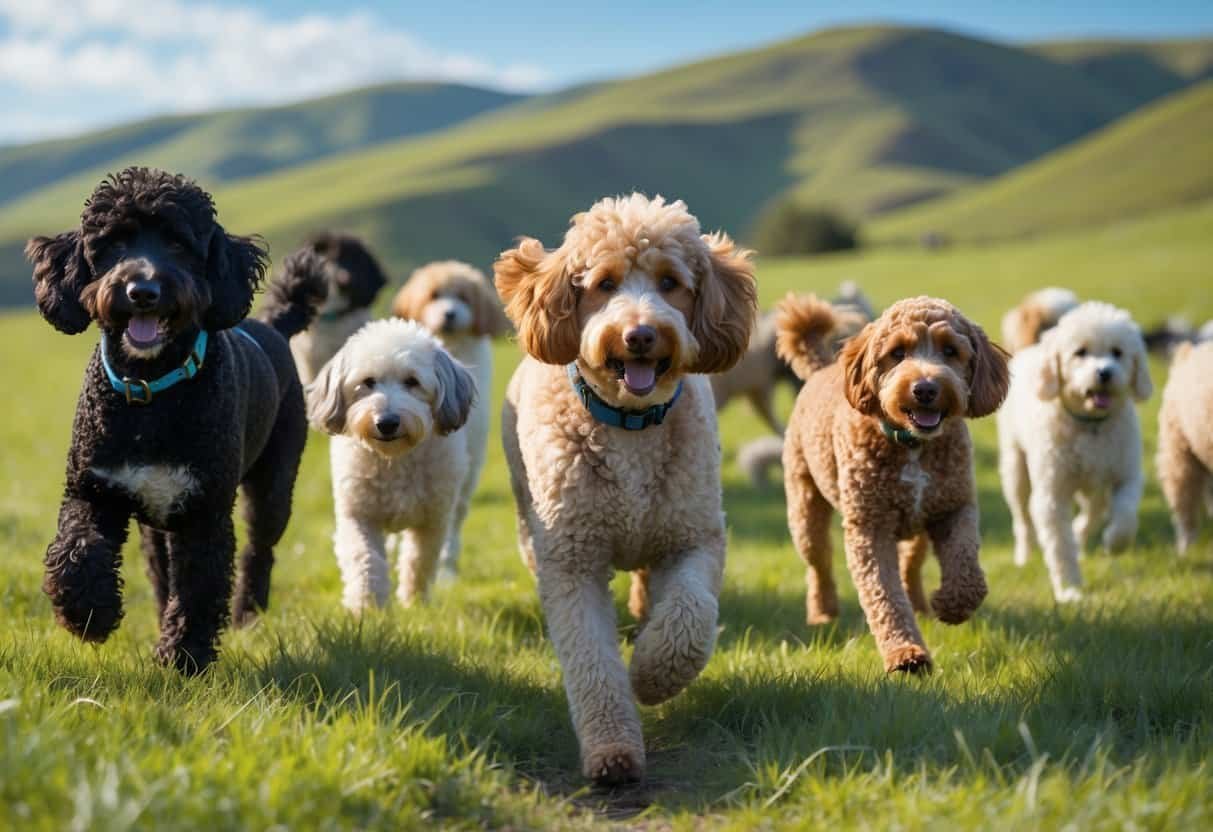
Some poodle mixes are famous for their brains and strong herding or working instincts. These designer dogs bring together the energy of poodles with the natural skills of classic herding breeds.
Aussiedoodle
The Aussiedoodle is a cross between a poodle and an Australian Shepherd. People love this mix for its high intelligence and how quickly it learns new commands.
Aussiedoodles are athletic, so they’re perfect for active families or anyone who spends a lot of time outdoors. They often pick up the herding drive from the Aussie side and can be super alert.
Most have curly or wavy, low-shedding coats, and their coloring is all over the place—merle patterns and blue eyes are pretty common. Because they’re smart and energetic, Aussiedoodles need plenty of exercise and mental stimulation.
Training, puzzle toys, or dog sports like agility are great for them. They really thrive when they get lots of attention and activity.
Borderdoodle
The Borderdoodle combines ancestries with a border collie, two of the smartest breeds out there. Borderdoodles stand out for their quick learning and love of having a job to do.
They have strong herding instincts from their border collie parent. These dogs are happiest when they’re busy—walks, runs, and interactive play are musts.
A typical Borderdoodle has a soft, wavy coat and a lean, athletic build. Colors are usually black, white, or a mix, but you’ll see plenty of variation. Some people call them hypoallergenic because of their poodle side, but regular brushing and grooming are still needed. For more about unique poodle mixes, check out this list of rare doodle hybrids.
Sheepadoodle
A Sheepadoodle shares genetics with an Old English Sheepdog. This mix is big and fluffy, and they’re usually gentle and friendly.
They sometimes show herding tendencies, like circling or nipping at heels, especially if they don’t get enough structured activity. Sheepadoodles need exercise and mental stimulation so they don’t get bored.
Most have thick, shaggy coats—black and white or gray and white are common. Regular grooming keeps their fur healthy and free of mats. Like a lot of poodle mixes, they may shed less than other big dogs, so allergy sufferers sometimes go for them. Learn more at Dogster’s guide to poodle mixes.
Uncommon Hunting and Retriever Poodle Mixes

Classic hunting breeds create some rare hybrids. These dogs often show off a blend of intelligence, a strong retrieving drive, and a knack for water.
Retrievoodle
A Retrievoodle (or Curly Retriever) integrates characteristics of the retriever breed.
These dogs have high energy and love outdoor activities.
Owners often notice their keen sense of smell and natural instinct for fetching.
Retrievoodles thrive with families who enjoy hiking, swimming, and playing fetch.
They usually have wavy or curly coats that don’t shed much.
Many Retrievoodles work well as hunting companions, blending the trainability of both parent breeds.
Their size, strength, and enthusiasm make them stand out among Poodle mixes bred for active lifestyles.
Key Traits
| Trait | Typical Features |
|---|---|
| Temperament | Friendly, eager, alert |
| Exercise needs | High |
| Coat type | Wavy or curly, low-shed |
Poodle Pointer Mix
Pointer mixes come from breeding with German Shorthaired Pointers or English Pointers.
These hybrids show strong instincts for pointing and hunting small game.
They have a focused attitude and a real willingness to work.
Their coat protects them from brush and water, so they’re reliable in all sorts of terrain.
Pointer mixes respond well to training but really need daily tasks to stay happy.
Families who pick these dogs often find them great for outdoor sports like tracking or field trials.
They can be loyal pets, but they do best with an active owner and plenty of space to roam.
Notable Features
- Pointing instinct
- Endurance in the field
- Water-resistant curly coats
Water Poodle Hybrids
Water Hybrids mix with other water dog breeds, like the Portuguese Water Dog, Irish Water Spaniel, or American Water Spaniel.
These dogs are powerful swimmers with webbed feet and thick, water-repellent fur.
They excel at jobs involving water, like retrieving ducks or even helping guide boats.
Their intelligence means they pick up commands quickly.
In the right home, they bring a lot of energy and a strong desire to please.
Grooming matters, since their coats can mat if you don’t keep up with it.
Training and socialization help channel their enthusiasm and drive in a positive way.
Highlights
- Skilled at swimming and water retrieval
- Highly trainable and obedient
- Adaptable to various water sports or work
Rare Doodle Mixes Beyond Goldendoodle and Labradoodle
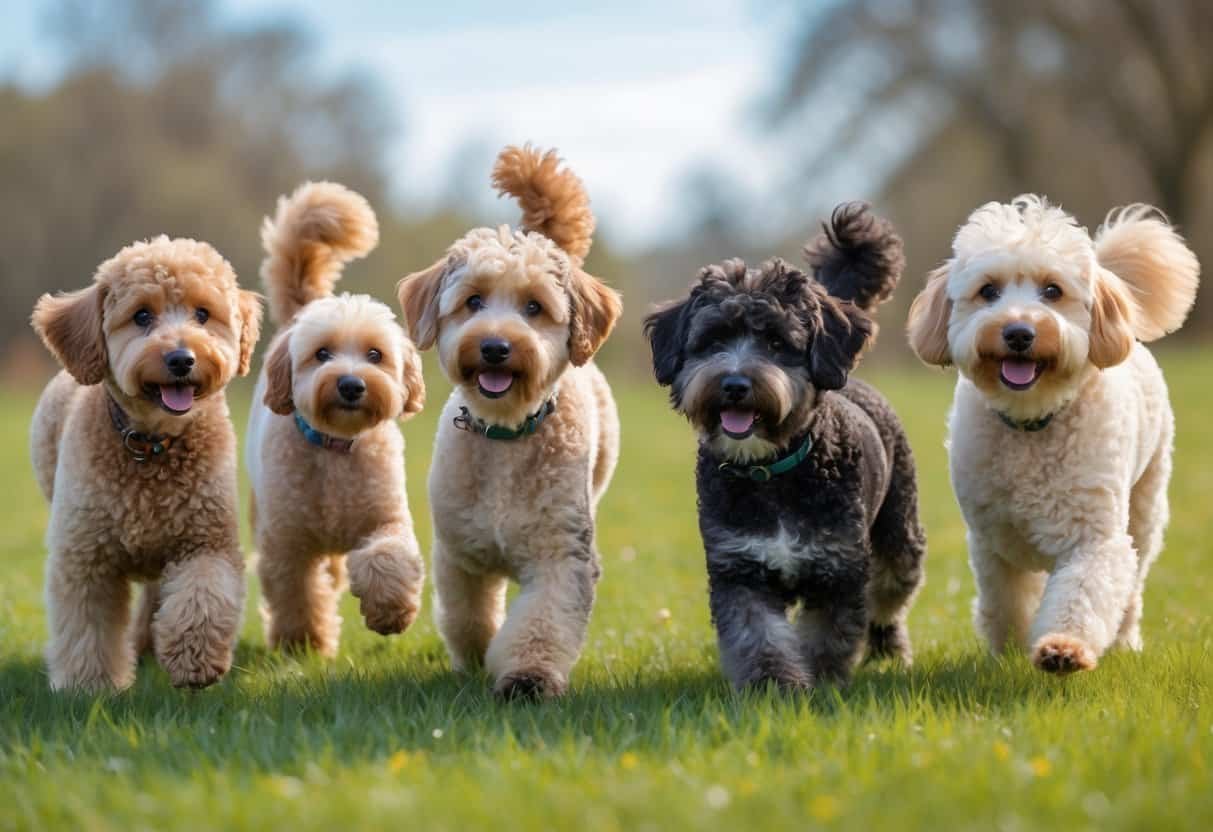
Plenty of unique poodle mixes have special traits and appearances that make them stand out from the usual doodles.
These rare hybrids blend the best qualities from less typical dog breeds with the benefits of intelligence and a hypoallergenic coat.
Airedoodle
The Airedoodle is a mix with an Airedale terrier.
It usually has a curly or wavy coat and comes in a range of sizes, depending on its parents.
This mix stands out for being friendly and highly trainable.
The Airedoodle often forms strong bonds with its family and enjoys regular mental challenges.
It does well in homes that can provide daily exercise and stimulation.
Key Features:
- Height: 20–27 inches
- Weight: 40–65 pounds
- Coat: Curly, low-shedding, sometimes wiry
- Temperament: Intelligent, social, alert
The Airedoodle’s unique look sets it apart from more common doodle breeds.
They’re alert and can make good watchdogs, but the poodle side keeps them friendly, not aggressive.
You can read more about uncommon mixes like these in lists such as super rare doodle hybrids.
Bassetoodle
The Bassetoodle combines the basset hound, leading to a dog with long ears and short legs.
This breed mix is friendly and laid-back, perfect for families who want a calm companion.
Bassetoodles may have a shaggy or wavy coat, depending on which parent gene is stronger.
Their faces often show that classic basset hound expression, with less shedding.
Typical Traits:
- Height: 10–14 inches
- Weight: 20–30 pounds
- Coat: Wavy or curly, low- to moderate-shedding
- Temperament: Gentle, affectionate, calm
Bassetoodles can be a good fit for less active owners thanks to their relaxed nature.
Grooming is important, since their coats can get tangled if you let it go too long.
Schnoodle
A Schnoodle is a cross between a schnauzer and a poodle.
This doodle mix can vary a lot in size, since both breeds come in several sizes themselves.
Schnoodles are often prized for their cheerful personalities and their tendency to bond closely with people.
They’re smart, quick to learn, and often love to play.
Standout Qualities:
- Height: 10–26 inches
- Weight: 10–70 pounds
- Coat: Curly or wavy, low-shedding
- Temperament: Loyal, alert, lively
These dogs can do well with kids and in homes that want an energetic but trainable pet.
Their coat can stay hypoallergenic with regular grooming, and shedding is usually pretty minimal.
For more details on less common doodles such as schnoodles, check out articles on popular and rare poodle mixes.
Poodle Mixes Recognized by Kennel Clubs
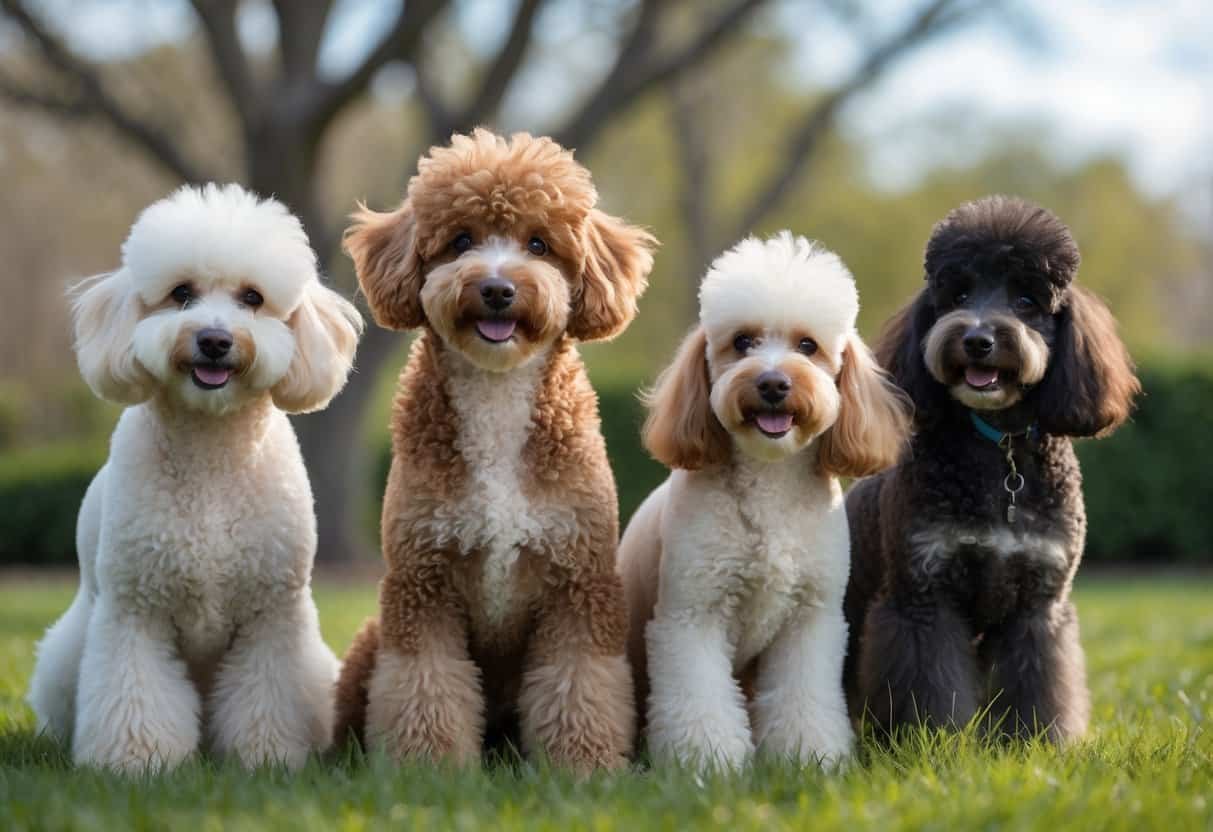
Poodle mixes, or “doodles,” have become popular for their looks and personalities.
But their official recognition really depends on the kennel club and its rules for breed standards and registration.
Breed Standards and Registration
Most poodle mixes aren’t officially recognized as separate breeds by major kennel clubs.
That means there’s no formal set of standards for things like appearance, size, or coat type.
These dogs often show traits from both parent breeds, so you get a lot of variety in a single litter.
This variety makes it tricky for kennel clubs to set a single standard for registration.
Some smaller organizations and designer dog registries will let owners register poodle mixes.
However, big clubs like the American Kennel Club (AKC) and United Kennel Club (UKC) have stricter rules and usually don’t accept these hybrids for full breed status.
Role of American Kennel Club
The American Kennel Club is one of the largest and most respected dog registries in the world.
The AKC only gives breed recognition to dogs with a long, documented history and predictable traits.
Right now, the AKC doesn’t recognize any poodle mixes, like Labradoodles or Goldendoodles, as separate official breeds.
It lets purebreds be registered and shown, but poodle mixes can only join the “Canine Partners” program.
This program lets mixed breed dogs enter some AKC events, such as agility or obedience trials.
But these dogs aren’t eligible for conformation shows, which require purebred status.
For more about popular poodle mix breeds, see this guide to poodle mixes.
Role of United Kennel Club
The United Kennel Club is an international dog registry based in the U.S.
Like the AKC, the UKC requires specific breed standards for full registration.
The UKC is a bit more open to newer or less common breeds, but it still doesn’t give full recognition to most poodle mixes.
Owners might be able to register certain hybrids under alternative listing programs, but those dogs can’t earn points or championships reserved for purebreds.
The UKC does accept some hybrid breeds for performance and companion events.
There’s often a special registry category for these dogs, but it doesn’t mean they get full breed status.
Hybrid owners should always check the current UKC rules before entering any shows or events.
Adopting Rare Poodle Mixes

Rare Poodle mixes sometimes pop up through careful breeder research or at local animal shelters that occasionally have unexpected hybrids.
It’s important to focus on health, ethical practices, and matching the right dog to the right household.
Finding a Reputable Breeder
Picking a responsible breeder helps ensure both the health and temperament of a rare Poodle mix.
Red flags include breeders who won’t provide health clearances, refuse to show where the dogs live, or sell multiple litters at once.
Good breeders answer questions, allow visits, and show health records for both parent dogs.
They often use contracts so you can return the dog if things don’t work out.
Many unique hybrids are pretty rare, so buyers might need to join waiting lists or travel a bit.
It’s smart to research the specific mix and look for reviews from previous buyers.
For more about rare hybrids, check out this guide about unique Doodle mixes.
Rescuing from Animal Shelters
Animal shelters sometimes have rare Poodle mixes looking for homes.
Adoption fees are usually lower than buying from a breeder and help support the shelter’s work.
If you’re after a specific mix, call shelters nearby and ask to be added to a waiting list.
Pet adoption websites, like Petfinder, can help you find available mixes around the country.
Shelter staff try to match dogs with the right family based on activity level and temperament.
Some rare hybrids may have unknown histories, so future owners should be patient as the dog settles in.
A second chance in a loving home can mean everything for these dogs.
Ethical Considerations
Ethical concerns matter a lot when you’re thinking about rare poodle mixes. Don’t support puppy mills or breeders who only care about producing odd-looking dogs instead of healthy ones.
Buying or adopting should never mean backing breeders who skip genetic health testing or ignore the well-being of the parent dogs. Think about the long-term care these mixes might need, especially if certain crosses come with health issues.
Adopting from a shelter or picking a breeder with high standards protects both the dogs and the wider pet community. Ask all the questions you need, and dig into research before you bring a rare Poodle mix home.
Grooming and Care for Unique Poodle Hybrids
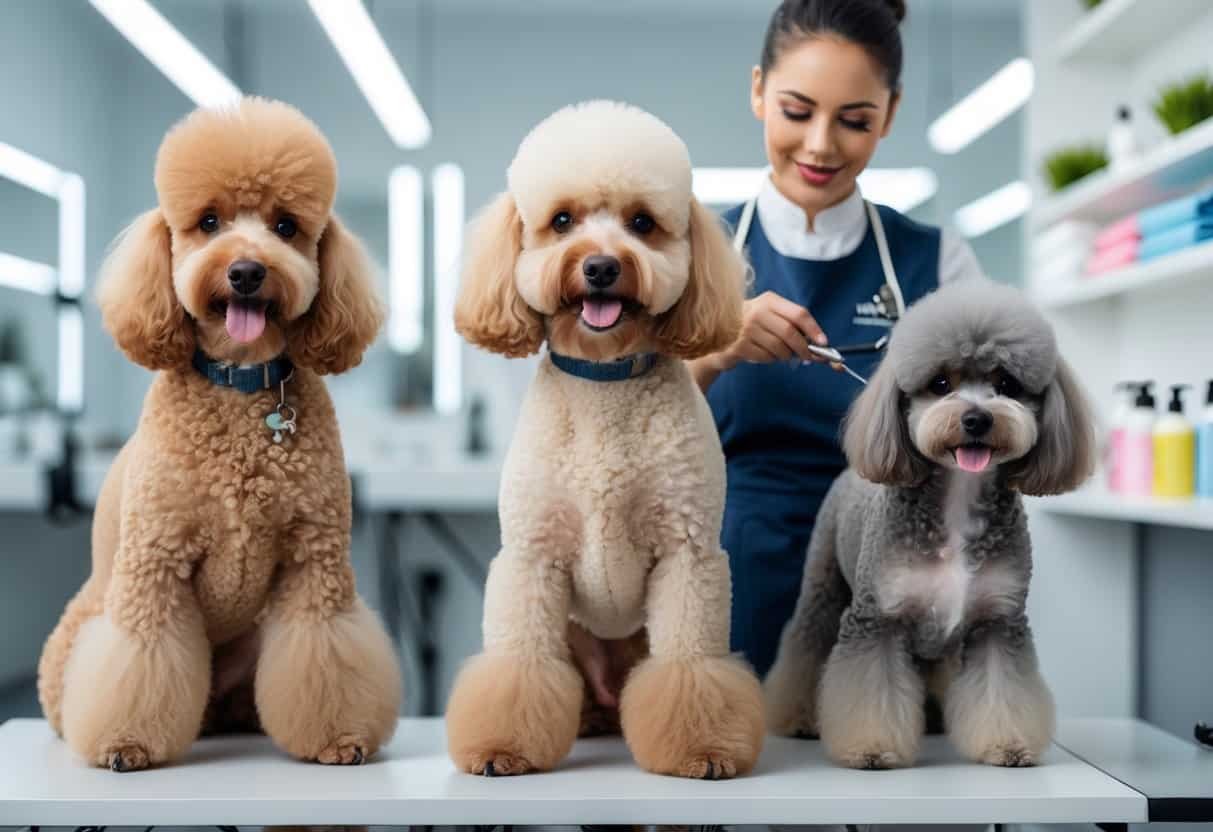
Rare poodle mixes usually need extra help with grooming and daily care. Their coats can be pretty unique, and their exercise needs aren’t always what you’d expect.
Some of these mixes might even work well for allergy sufferers, but it’s not a sure thing.
Managing the Curly Coat
Poodle hybrids almost always get a curly or wavy coat. This kind of fur tangles easily if you don’t keep up with it.
Regular brushing—at least three times a week—keeps knots and mats from taking over. Some mixes need trims every six to eight weeks.
Grab a slicker brush or a comb made for curly coats. Baths are necessary, but not too often—maybe once a month—since too much washing dries out the skin.
Professional grooming helps, especially with thick or dense fur. Always check ears, trim nails, and watch for skin problems hiding under the curls.
For more tips, check out PoopBags.com’s guide on grooming special poodle crosses.
Exercise and Activity Needs
These unique poodle mixes are smart and usually pretty active. Daily walks, playtime, and mental games keep them in good shape.
Some need a ton of exercise, while others with smaller parents might be fine with less. Fetch, tug-of-war, and puzzle toys all work to keep their minds and bodies busy.
Think about the size and energy of both parent breeds. A miniature poodle mix might do just fine in an apartment, but a bigger cross will want longer walks and more space.
Agility training or obedience classes are great ways to channel their brains. Regular activities keep boredom and bad habits away.
Allergy Considerations
A lot of people pick poodle mixes hoping they’ll be hypoallergenic dogs. The curly coat does catch dander, which can help if you’ve got allergies.
But not every poodle mix is the same, and allergy levels can really vary from dog to dog. Spend some time with the actual dog before you commit.
Regular grooming and cleaning help keep the dander down. Air filters and frequent vacuuming can make a difference too.
No dog is ever totally hypoallergenic, but some poodle mixes are less likely to trigger allergies. For more info on different poodle mix breeds and their allergies, Dogster has a good breakdown.
Training and Socializing Rare Poodle Mixes
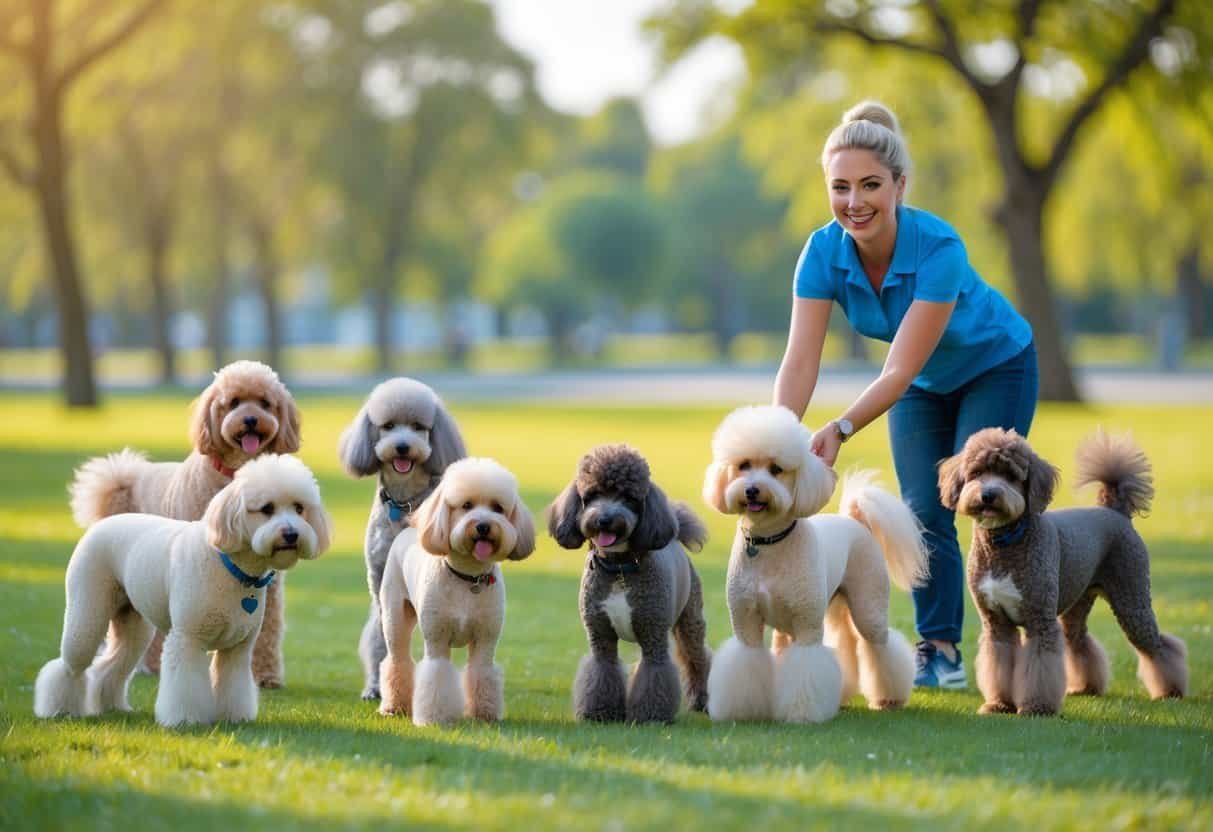
Rare poodle mixes are usually quick learners. They can have pretty different personalities and energy levels, though.
Training helps these dogs settle into family life and keeps annoying behaviors in check.
Housebreaking Techniques
Housebreaking is always one of the first big hurdles. Most rare poodle mixes do best with a set routine.
Take your dog out first thing in the morning, after meals, and before bed. Using positive reinforcement—like treats or praise—works wonders.
Crate training can help avoid accidents and gives the dog a safe spot. Pick a bathroom spot outside so your puppy learns where to go.
If there’s an accident, use an enzyme cleaner to get rid of the smell. Don’t punish the dog; gentle correction is much more effective.
Puppies usually catch on faster, but some rare mixes might take a little longer, especially if they’re extra energetic or came from tough backgrounds.
Teaching Obedience
Obedience training builds trust and keeps unwanted habits in check. Start with basics like sit, stay, come, and leave it.
Keep sessions short—just 5 to 10 minutes—a few times a day. Rare poodle mixes love mental challenges, so use clickers or treats to reward them.
If your dog seems stubborn, figure out what gets them excited—some love toys, others are all about snacks. Practice commands in different places, both indoors and outside.
Gradually add distractions, like cars or other pets. Socializing pups with other dogs and people helps cut down on fear and shyness. Group classes can be a big help for social skills too.
Supporting Agility Training
Lots of rare poodle mixes are agile and love to move, so agility training is a natural fit. It boosts confidence, sharpens focus, and strengthens their bond with you.
Start with easy obstacles—tunnels, jumps, weave poles. Give clear cues and reward them right away for each success. Short, upbeat sessions keep them interested.
Agility burns off physical and mental energy, which helps prevent destructive habits. Stick with positive training and start slow to avoid injuries.
Some rare poodle mixes are naturals at agility thanks to their brains and athleticism. Agility can also bring families and dogs closer together. For a rundown of rare doodle types that might excel at this, check out this guide to unique poodle mix breeds.
Health Concerns in Lesser-Known Poodle Mixes
Rare poodle mixes can inherit health issues from both sides. Knowing breed-specific risks and getting specialized care can make a real difference in their lives.
Common Hereditary Issues
Lots of lesser-known poodle mixes are prone to genetic problems. Some develop joint issues like hip or elbow dysplasia, which can mean pain or trouble moving around.
Eye problems, including cataracts and progressive retinal atrophy, show up pretty often too. Mixing different body types can throw some curveballs—sometimes you get unexpected allergies or skin conditions.
Digestive or heart issues might pop up, depending on their family tree. Floppy ears can trap moisture and dirt, so ear infections are another thing to watch for.
Regular grooming and routine health checks help catch these problems early.
Preventative Veterinary Care
Preventative care keeps rare poodle mixes healthier and can save money down the road. Puppies need all their shots and regular deworming during the first year.
Adult dogs should see the vet annually for checkups, dental cleanings, and blood tests. A full physical exam can catch problems early, before they turn serious.
Ask your vet about genetic screening, especially if the parent breeds have known risks. Keeping a balanced diet and a healthy weight is huge—extra pounds make joint and heart issues worse.
Some rare mixes need more attention to their skin, coat, and ears. Regular brushing and cleaning help prevent infections. Early spaying or neutering lowers some cancer risks too.
Lifespan and Longevity
Lesser-known poodle mixes usually live somewhere between 10 and 18 years, pretty similar to purebred poodles. Hybrids from healthy lines and good breeders tend to last longer.
Size, genetics, and daily care all affect life expectancy. Small poodle mixes generally outlive the bigger ones.
Routine vet visits, the right food, and regular exercise all help them stay active for years. Poodles themselves are often pretty sturdy dogs, and mixes usually benefit from that, but you never know what might come up. Stay alert throughout your dog’s life.
Notable Rare Poodle Mixes in Popular Culture
Rare poodle mixes sometimes steal the spotlight online or in entertainment, thanks to their quirky looks and personalities. Some have even gone viral or popped up in movies and TV shows.
Social Media Sensations
Mixes like the Shepadoodle (German Shepherd and Poodle) and Irish Wolfadoodle (Irish Wolfhound and Poodle) have become standout stars on Instagram and TikTok. People love their wild fur patterns, surprising sizes, and goofy personalities.
Some owners set up whole accounts just for their dogs, posting photos and videos every day. These accounts can get thousands of followers.
Fans like seeing how these dogs fit into family life or play with other pets. Hashtags like #Shepadoodle or #Wolfadoodle sometimes trend during social media challenges.
Posts often show off grooming routines, exercise habits, and favorite foods. People use these accounts to learn before picking a rare poodle mix for themselves.
The buzz around these accounts shows how much interest there is in unusual hybrids—way beyond the usual Labradoodle or Goldendoodle crowd.
Media and Film Appearances
Rare poodle mixes don’t show up much in movies or TV. You’ll spot the usual poodle-crosses way more often.
Still, every now and then, a Newfypoo (that’s a Newfoundland and Poodle) or a Bordoodle (Border Collie and Poodle) lands a background role in a commercial or a series.
Directors sometimes pick a Newfypoo for its gentle temperament and big, huggable size. It just works for family-friendly ads.
A Bordoodle, on the other hand, tends to shine for its smarts and trainability. Quick tricks on set? No problem.
These hybrids also catch the eye with their unique looks and allergy-friendly coats.
If you’re curious about more unusual poodle mixes, there’s a handy list here.
Frequently Asked Questions
Rare poodle mixes can really vary in size, looks, and temperament. Some are a better fit for certain homes or owners with more experience.
Prices and how easy they are to find usually depend on how uncommon the mix is. Some of these pups are pretty hard to track down.
Which lesser-known poodle mixes offer unique traits?
Mixes like the Pyredoodle (Great Pyrenees and Poodle), Sheepadoodle (Old English Sheepdog and Poodle), and Scoodle (Scottish Terrier and Poodle) bring something different to the table. Expect unusual coat colors, quirky personalities, or exercise needs you don’t see in the more popular doodles.
What are some uncommon small poodle mix varieties?
Looking for something small and offbeat? Check out the Affenpoo (Affenpinscher and Poodle), Bolonoodle (Bolognese and Poodle), or Doxiepoo (Dachshund and Poodle).
These little guys have a lot of energy but usually manage well in apartments or smaller homes. If you want to dig deeper, Lancaster Puppies has a guide on Unique Poodle Mix Breeds.
Are there large poodle hybrids that are considered quite rare?
Absolutely—some big, rare mixes are out there. The Irish Wolfadoodle (Irish Wolfhound and Poodle), Saint Berdoodle (Saint Bernard and Poodle), and Newfypoo (Newfoundland and Poodle) all fit the bill.
These dogs can get huge and often have laid-back personalities. They’re not for everyone, but wow, are they impressive.
What poodle crossbreeds are recommended for first-time dog owners?
If you’re new to dog ownership, poodle mixes like the Schnoodle (Schnauzer and Poodle), Sheepadoodle, or Foodle (Fox Terrier and Poodle) are usually a safe bet. They’re known for being steady and not too high-maintenance.
It’s smart to look for a mix bred for stable behavior, though. Some rare hybrids can be unpredictable, which might throw a first-timer for a loop.
Which exclusive poodle mix commands the highest price in the market?
When it comes to rare mixes, the Bernedoodle (Bernese Mountain Dog and Poodle) and Sheepadoodle often top the price charts. They’re popular, and their looks don’t hurt either.
Even more exclusive hybrids, like the Irish Wolfadoodle, can cost quite a bit since breeders only produce a handful. If you’re curious, there’s a good overview of rare doodle hybrids worth checking out.
What are the most distinctive large Poodle mix breeds?
The Newfypoo stands out for its size and gentle nature. You can’t miss its presence in a room.
The Pyredoodle grabs attention with its thick coat and calm manner. It’s a real head-turner during walks.
Then there’s the Saint Berdoodle, which can tip the scales at over 100 pounds. That’s a lot of dog to love.
These larger mixes need different grooming and exercise routines than their smaller doodle cousins.
Frequently Asked Questions
What should I know before getting started?
Every poodle is unique, so patience and consistency are key. Start slowly and adjust based on your dog’s response.
How long does this typically take?
Results vary, but most owners see progress within 2-4 weeks of consistent effort.

